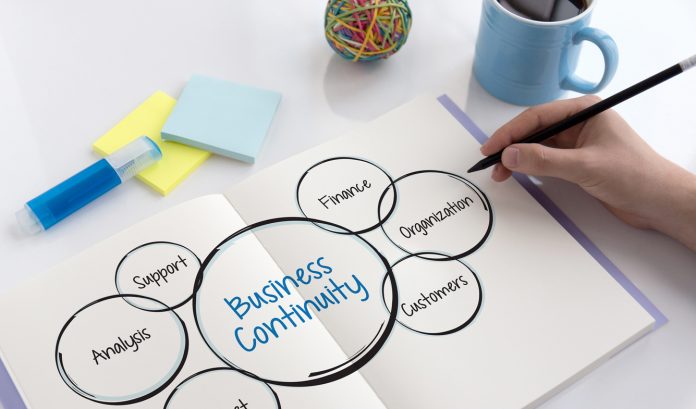CIOapplications.com March 30th 2018
Having been in the industry from its inception, the William Travis Group (WTG) has seen and worked hands-on with all of the industry’s disaster recovery and business continuity solutions. As an impartial third party whose only stake is to help their clients apply these solutions to their benefit, WTG considers itself distinctly positioned to create a win-win for clients.
In an interview with CIO Applications, William T. Bedsole, President of WTG shares his insights on WTG’s journey, its methodologies, and the tools that have helped them transform the Business Continuity Solutions arena.
The William Travis Group, Inc.
The William Travis Group delivers Disaster Recovery, Business Continuity and All-Risk Incident Management methodologies and solutions.
William T. Bedsole, President
- On the Disaster Recovery and Business Continuity Industry –
We saw 2017 as a transformative year for the disaster recovery and business continuity industry. From our perspective, all of the new players and recent technologies have finally coalesced into a genuinely usable and competitive, industrywide solution for the first time. While there have been many bleeding-edge recovery and continuity solutions available for the last few years, we looked at 2017 as the milestone when they finally matured into a repeatable solution applicable to companies of all sizes anywhere in the world. Hosting and collocation services, cloud-based technology, data replication, high/continuous availability capabilities, and alternate work area options have all evolved from limited point solutions to genuinely viable business alternatives.
WTG is very excited that this time has finally come because it represents a dramatic benefit for our clients, one that we believe WTG is uniquely positioned to help them take advantage of.
- In your interactions with CIOs of leading companies, what are some of the challenges you get to hear about from them and how is The William Travis Group, Inc. efficiently addressing these issues?
The benefits of the new solutions discussed above and their anticipated cost savings, are leading companies to over-architect their recovery solutions. We are talking to more companies who say “we cannot document our environment and don’t know how to define our actual recovery needs, so we are going to recover everything.” While the cost efficiencies promised by the new solutions may make this path look attractive, this approach is just as inappropriate, neglectful, and unnecessary as it has always been, maybe more so. The savings the new technologies can return when correctly applied to the true recovery needs can be applied elsewhere in the program to improve its overall results dramatically. In fact, by leveraging the new solutions against the defined needs, recovery can be comfortable, faster, more comprehensive, and far more realistic. This is where WTG’s NextGen™ methodology and tools shine. When defining a company’s recovery requirements and designing the resulting recovery architecture, our approach has always been to define the optimal solution. The biggest technology recovery footprint inherently limits dollars that can be spent on the rest of the program (staff, plan development, testing, and training). Conversely, the smallest recovery footprint may result in the lowest technology costs, but typically dictates the highest total program cost by burdening the business to make up the shortfall that technology recovery neglects. A Business Impact Analysis (BIA) is the industry’s prescribed way to define a business’ recovery needs and priorities. However, most BIAs create an unacceptable drain on staff resources, and usually produce an inaccurate and typically inflated definition of needs. WTG’s alternative, the Iterative Business Process Decomposition™ (IBPD) has been continually refined and enhanced for nearly 30 years and defines a company’s recovery needs much more accurately, in much greater detail, with far less impact on the operational staff, in a fraction of the time of a traditional BIA and produces the optimal definition of needs. Combine that advantage with WTG’s unparalleled and impartial experience designing recovery architectures, and the results speak for themselves.
- How does WTG combine innovative strategies, unparalleled experience, broad product knowledge, and hands-on technical skills to deliver a cost- and operationally-effective continuity and incident management program?
Since WTG’s inception, we have positioned our services differently. We do not attempt to provide open-ended tools that must be customized to address one individual’s perspective of what is needed to run their program. We offer proven solutions that work in the real world given the real limitations and real constraints that our clients face. Our unique toolset improves upon the industry’s ageing methodology and has been proven in organizations of all types, sizes, and industries, around the world. Our ideal client is sincerely concerned about their company’s survival in a disaster event but does not want a “software tool” to take over their world. They are not looking for a “solution” that will take them years to customize and still do little more than produce dozens or hundreds of reports that no one will know how to use. One of WTG’s founding principles is always to improve the industry’s current paradigm.
- Please shed some light as to how your proprietary tools and techniques offer our clients the best price-performance possible?
Five basic value principles have been built into our methodology and tools from day one. Collectively, we believe that these principles combine to offer our clients the best price/performance in the industry. First, our methodology provides a holistic combination of All-Risk Incident Management, Disaster Recovery, and Business Continuity that enables our clients to respond to any event, any time. Also, our methodology and tools are designed to improve RTOs and RPOs through planning and not spending. Second, it is easy to reduce RTOs and RPOs by throwing money at the problem. It is much harder to define the optimal RTOs and RPOs that neither overstate nor understate the business’ true needs and then to find the most cost- and operationally-effective way to achieve those needs. Through a proprietary process which utilizes multiple iterations to validate and cross-validate the business’ stated needs, our approach defines those needs faster and more accurately than ever before. Combine that accuracy with our proprietary “RTO and RPO Reducers” and our proven ability to apply the most cost and operationally-effective solution, and your program can be transformed faster than you ever thought possible. Third, our plans were designed from the ground up to provide much more detail than most plans, but at the same time, to be easier to use and to maintain. WTG’s plans are event-agnostic, impact-specific, size appropriate, multi-threaded and dynamically generated at time of disaster (ATOD) to direct your staff exactly what to do, when and where to do it, and how to do it for each unique disaster event and its accompanying unique impact. Next, our approach addresses what may be the most widespread challenge that almost all companies face. Regardless of how important the subject of DR/BC is to an organization, there is always the never-ending press of the day-today business which competes for their time and focus. Our methodology and tools dramatically reduce an organization’s dependence on key individuals and painlessly insulates it from the inevitable reassignments and staff movement by replacing arcane industry practices with intuitive tools and techniques. Finally, WTG’s automated tools actually eliminate many traditional maintenance requirements and entirely and dramatically reduce most of those that remain. Your program can be more evergreen than you thought possible and your staff less overwhelmed…all while benefiting from the reward of efficient maintenance…greater participation and increased mindshare from all participants.
CIO Applications
BUSINESS CONTINUITY SPECIAL
MARCH 29th 2018
CIO Applications #33 – Technology Engine for Business
Top 25 Business Continuity Solution Providers 2018
Managing Editor: Joe Phillip
The annual listing of companies providing Business Continuity Solutions to help clients transform their businesses.
William Travis Group: NextGen™ Advanced Business Continuity Solutions
It is essential for a firm of any size to have in place a business continuity plan that ensures operations remain unaffected by occurrences of unpredictable events such as cyber-attacks, natural disasters, or other external threats. With advancements in technology, attacks like ransomware are becoming more common and complex than before, making it necessary for organizations to add ransomware protection to their data backup systems. However, many businesses are yet to upgrade their existing legacy backup and data recovery systems. With cybersecurity threats only expected to aggravate, companies that fail to invest in the latest technologies are at risk of data breaches. Moreover, maintaining business continuity will also help reduce long-term technology costs, decrease the need for manual and time-consuming IT fixes, and detect problems at the first sign of a potential disaster.
Software-defined networking (SDN) is starting to gain more momentum from a business continuity perspective for its ability to provide an additional layer of intelligence in routing that allows direct programming of network control and abstraction of the underlying infrastructure. SDN also helps businesses achieve greater resiliency, availability, optimizes bandwidth, prevents disruptions, and reduces bottlenecks. Similarly, hybrid cloud computing systems are also at the forefront of helping maintain business continuity. Hybrid cloud gives companies data backup, fail-over of servers, and the ability to recover the data from anywhere and at any time. Disaster recovery as a service has become smarter with the growth of virtualization and cloud computing, allowing companies to recover data, individual machines, or the entire infrastructure in a matter of seconds via a virtual environment.
Today’s market is replete with numerous solution providers capable of assisting companies to prepare a comprehensive business continuity plan. This edition of CIO Applications brings you “Top 25 Business Continuity Solution Providers – 2018.” Our distinguished panel comprising CEOs, CIOs, and analysts along with the editorial board of CIO Applications has narrowed the choices to leading companies that are delivering innovative business continuity solutions.
“Our methodology provides a holistic combination of All-Risk Incident Management, Disaster Recovery, and Business Continuity that enables our clients to respond to any event, any time.”
- Could you give us a case study wherein The William Travis Group, Inc. was instrumental in addressing a key challenge faced by a client?
The WTG was initially contracted to conduct a BIA to define an organization’s disaster recovery requirements: including critical business processes; critical applications; equipment configurations; loss impacts and RTO or RPO; to recommend a recovery architecture that supported the defined requirements; and to assist with negotiating terms of a commercial hotsite agreement to support those requirements. We used our IBPD Methodology or Tools to identify the business’ critical application requirements and redesigned the recovery architecture so that it would support those requirements in the most cost-effective manner. The previous internal BIA defined approximately 50 servers and 67 applications as critical and allowed approximately 7-10 days to recover. Our IBPD analysis indicated that over 150 applications on over 350 servers were required and that they had to be fully recovered in 3-5 days. We determined that the best way to accomplish those objectives was with a combined internal-external architecture that employed advanced data mirroring techniques for core infrastructure. We sourced and negotiated the third-party contract and negotiated an initial 12-month “Bridge Agreement” of the original hot site agreement that included comprehensive disaster recovery coverage (at nearly 5x the original coverage) for less than half the original cost. Additionally, WTG worked to ensure that both the pricing and ‘best practice’ contractual terms and conditions were included in the Agreement. The result was a pricing model, contract terms and conditions, and a deal structure that are still unmatched in the industry.
- What are the strategies employed by The William Travis Group, Inc. to thwart the market competition and what according to you are the distinct features of The William Travis Group, Inc. /differentiating factors that give it a competitive edge?
We have only one strategy to thwart the market competition, “provide the best cost-benefit ratio in the industry, improve upon the current industry standard and always exceed our client’s expectations.”
- What does the future hold for your organization? Any footprint expansion plans or platform enhancement strategies that you can shed light upon?
We are on the verge of releasing the latest version of our ARIMBA™ platform which will offer several new automation features that are unique in the industry, and which further increase recoverability and reduce overhead.







